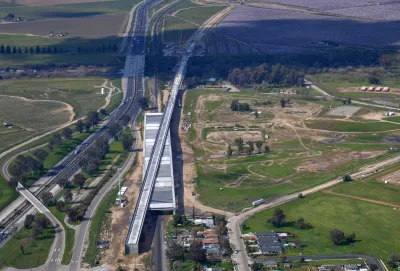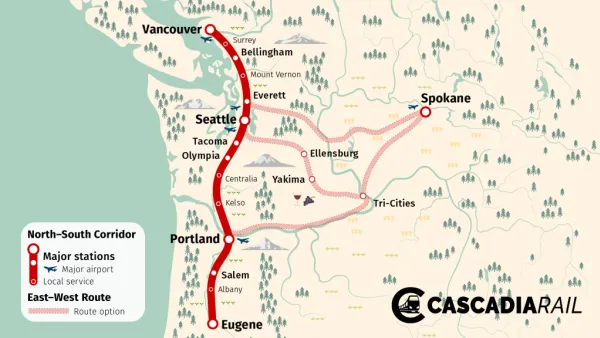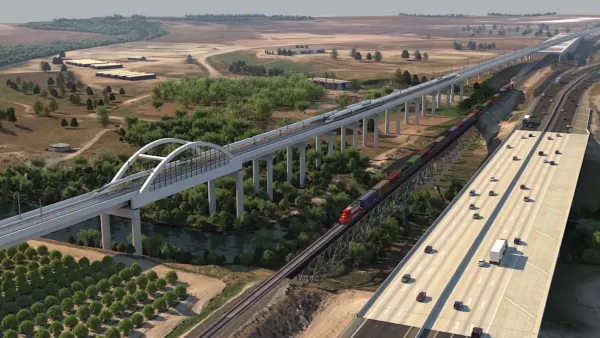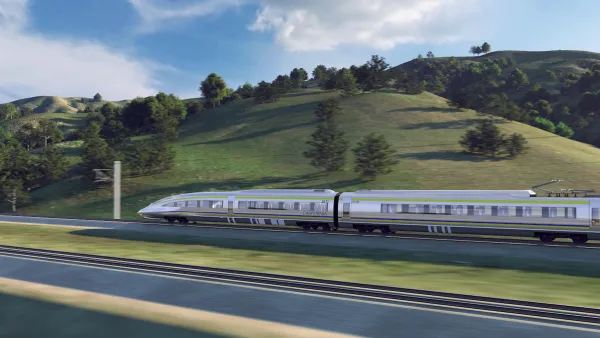The New York Times recently checked in with the California High-Speed Rail project and reported the current details, still in the process of a long evolution.

Jill Cowan writes for the New York Times to describe the California High-Speed Rail project at a "crossroads": 1,000 workers are currently employed in the state's Central Valley building along 119 miles or right away, but the project is inching along compared to its high-speed ambitions. State voters approved a $10 bond in 2008 and the project broke ground in 2015, and planning for the project goes much further back into history. The California High-Speed Rail Authority was established in 1996, for instance.
The premise of Cowan's article, given how much time has elapsed and the relatively inconspicuous signs of the project's development along Highway 99: "many California residents have long since lost track of what is being built where, and when or if it will ever be completed."
"In 2008, when the bond measure passed, the project symbolized the state’s ambition to build and think big," writes Cowan. "But in the years since then, the project has become something else: an alarming vision of a nation that seems incapable of completing the transformative projects necessary to confront 21st century challenges."
As noted in the article, the Biden administration is pushing the approval of the federal Infrastructure Investment and Jobs Act as signs of a coming "infrastructure decade." The California High-Speed Rail promises nothing more, at this point in the history detailed in the source article below, than to be one of the toughest tests of that ambition.
FULL STORY: California’s Ambitious High-Speed Rail at a Crossroads

National Parks Layoffs Will Cause Communities to Lose Billions
Thousands of essential park workers were laid off this week, just before the busy spring break season.

Retro-silient?: America’s First “Eco-burb,” The Woodlands Turns 50
A master-planned community north of Houston offers lessons on green infrastructure and resilient design, but falls short of its founder’s lofty affordability and walkability goals.

Delivering for America Plan Will Downgrade Mail Service in at Least 49.5 Percent of Zip Codes
Republican and Democrat lawmakers criticize the plan for its disproportionate negative impact on rural communities.

Test News Post 1
This is a summary

Test News Headline 46
Test for the image on the front page.

Balancing Bombs and Butterflies: How the National Guard Protects a Rare Species
The National Guard at Fort Indiantown Gap uses GIS technology and land management strategies to balance military training with conservation efforts, ensuring the survival of the rare eastern regal fritillary butterfly.
Urban Design for Planners 1: Software Tools
This six-course series explores essential urban design concepts using open source software and equips planners with the tools they need to participate fully in the urban design process.
Planning for Universal Design
Learn the tools for implementing Universal Design in planning regulations.
EMC Planning Group, Inc.
Planetizen
Planetizen
Mpact (formerly Rail~Volution)
Great Falls Development Authority, Inc.
HUDs Office of Policy Development and Research
NYU Wagner Graduate School of Public Service





























